Mangyangjeong Pavilion (망양정)
2020-02-13
Sanpo-ri, Uljin-gun, Gyeongsangbuk-do
+82-54-789-6923
Mangyangjeong Pavilion is a beautiful wooden architecture located near Mangyang Beach in Sanpo-ri, Uljin. King Sukjong of the Joseon dynasty, upon seeing the paintings of the “Eight Scenic Sights in Eastern Korea,” picked the pavilion as the best one among them; he personally wrote Gwandongjeilru (The Best Pavilion in Eastern Korea) and ordered it to be hung in the pavilion.
While it was originally located in Hyeonjongsan Mountain in Hyeonjong, Mangyangjeong Pavilion was moved to its current spot in 1858 and rebuilt in 1958. The pavilion is situated atop a hill dotted with pine trees, where one can get a clear view of Wangpicheon Stream flowing to the sea. Records are found describing that the area was visited by King Sukjong and other prominent figures in Korean history for the astounding views seen from the pavilion.
Mangyang Beach is shallow and narrow, but it is relatively warm among the beaches on the east coast. With a lush pine forest along the shore, the beach is quiet year-round, making it a pleasant attraction to walk and relax. When the waves are calm, visitors can see Turtle Rock protruding out from the ocean. The beach is a popular destination for summer travelers thanks to the numerous nearby attractions including Seongryugul Cave (Natural Monument No. 155) and Bulyeonggyegok Valley.
Seongnyugul Cave [National Geopark] (성류굴 (경북 동해안 국가지질공원))
2024-01-09
221 Seongnyugul-ro, Geunnam-myeon, Uljin-gun, Gyeongsangbuk-do
Seongnyugul Cave, a Natural Monument of Korea, is a limestone cave with a general northeast-southwest orientation. It has a total length of about 870 meters, of which only a strip of 270 meters is open to the public. Inside the cave are a variety of cave formations, including stalactites, stalagmites, columns, and cave pearls, which are commonly found in limestone caves. Unlike other limestone caves in Korea, Seongnyugul Cave has twisted columns and submerged stalagmites. Twisted columns are often broken in the middle due to earthquakes that occurred after the columns were formed. Submerged stalagmites are notable because stalagmites usually do not grow under water as they are made from droplets that fall from the ceiling. As such, stalagmites found underwater were submerged after they were created, indicating that they were created during the Ice Age, when the East Sea was lower than the present level.
(Credit: Gyeongbuk Donghaean Geopark)
Bandi Land (무주 반디랜드)
2024-04-07
1324, Museol-ro, Muju-gun, Jeonbuk-do
+82-63-324-1155
Geared mainly towards children, Bandi Land is an excellent place to learn about and experience fireflies and other insects. It is comprised of Insect Museum, Firefly Research Center, Youth Campground, Log Cabin, and Firefly Habitat.
Located inside of Bandi Land, Muju Bandibyeol Astronomical Science Museum teaches various stories about space, including the birth & history of space, the solar system, constellations, and space circumstances. The Environment Theme Park also has exhibitions related to fireflies, an indicator insect proving Muju is a clean area, and other local insects, perfect for educational trips.
Chiryeongyegok Valley (칠연계곡)
2024-04-07
608, Chiryeon-ro, Muju-gun, Jeonbuk-do
+82-63-323-0577
Chiryeongyegok Valley is situated behind Tongan Village in Anseong-myeon near Deogyusan Mountain. While not as famous as the valley in Gucheon-dong, the valley boasts a beautiful array of waterfalls, oddly shaped rocks, and ponds. The best known attraction is Chiryeonpokpo Falls, meaning “seven falls connected to pools.” There, pure water flows gently, moving from one pool to the next.
Jeoksangsan Mountain (적상산)
2024-04-07
Goemok-ri, Muju-gun, Jeonbuk-do
+82-63-322-4174
As one of the best scenic mountains in Korea, Jeoksangsan Mountain (1,030.6 meters) showcases imposing, steep rock walls. Jeoksangsan, also called Red Skirt Mountain, got its name from the view of red maple trees around cliffs in fall that makes the mountain look like a giant red skirt. The mountain boasts a variety of attractions from Hyangnobong Peak (1,029 meters), Cheonilpokpo Falls, Songdaepokpo Falls, Jangdobawi Rock, Janggunbawi Rock, and Allyeomdae Cliff.
The rugged shape of the mountain was considered ideal for building a fortress. And after Jeoksangsan became a designated site for storing Joseonwangjo Sillok (annals of the Joseon Dynasty), the fortress surrounding it was further rebuilt. The mountain is also home to Anguksa Temple, an ancient temple built in 1227 (during the 3rd year of King Chungryeol’s reign) by Monk Wolin. The mountain can easily be climbed by hiking or by vehicle; there is a paved road stretching over 15 kilometers that leads to the top of the mountain thanks to the construction of Muju Power Plant, letting tourists visit Sanjeong Lake and Anguksa Temple conveniently.
Naganminsok National Recreational Forest (국립 낙안민속자연휴양림)
2020-12-03
1600, Minsongmaeul-gil, Suncheon-si, Jeollanam-do
+82-61-754-4400
Naganminsok National Recreational Forest is situated in Nagan-myeon, Suncheon, conveniently accessible by train and bus. Just two kilometers from the historic Naganeupseong Walled Town, Naganminsok National Recreational Forest boasts exquisite surroundings. Some famous attractions near the forest are Songgwangsa Temple, Seonamsa Temple, Juamho Lake, and Sangsaho Lake, offering opportunities to appreciate ancient temples and the glow of the setting sun over the lakes. Perhaps more famous nearby attractions, though, are the breathtaking rows of reeds at Suncheonman Bay and Naganeupseong Walled Town, the home of cultural festivals and events.
The forest is surrounded by mountains and a river with a homely garden atmosphere. The two beautiful mountains, Geumjeonsan and Obongsan snuggly envelop Naganminsok National Recreational Forest. On rainy days, visitors can enjoy spectacular cascading falls of water at Cheonyeopokpo Falls within the forest.
Huirisan Pine Tree Recreational Forest (국립 희리산해송자연휴양림)
2022-07-22
+82-41-953-2230
Surrounded by majestic pine trees, Huirisan Mountain boasts an outstanding landscape; there is a reservoir at the foot of the mountain. Upon climbing to the top of the mountain, visitor can overlook the scenic West Sea. There are also numerous attractions near Huirisan: Chunjangdae Beach, Geumgang River Banks, and Hansan Mosi Town (“Mosi” referring to “Ramie,” the predominant fabric used for traditional Korean clothing)
The top of the mountain (329m in x_height) is called Munsubong (or Munsu Peak). To the northwest of the Huirisan Pine Tree Recreational Forest is Saindae. Legend goes that four generals used to play there. Indeed, there is a cliff (140m in x_height) just below Saindae where they were believed to do chin-ups. Naturally, people call the area Teokgeolijang (Chin-Up Spot). Traces of Munsusa Temple still remain below Munsubong although it was said to have been destroyed by a huge number of bedbugs. 500m from Munsubong to the south, horse riding trails of the four generals are dotted along the ridge; Malttongbawi (Horse Dung Rock), resembling horse droppings, is 500m from the peak to the southeast.
Below Munsubong are four large peaks where the four generals lived and 100 small rocks beneath them that were home to low ranking men commanded by the generals. Because of their unique shapes, those rocks form a scenic sight while hiking in Huirisan.
Wondang Horse Ranch (Let's Run Farm) (원당종마목장 (렛츠런팜 원당))
2021-11-29
233-112, Seosamneung-gil, Deogyang-gu, Goyang-si, Gyeonggi-do
+82-2-509-2672
Wondang Horse Ranch became famous as it was used as a drama filming site. It includes some dangerous facilities and therefore certain restrictions apply to the public. Inside the ranch, visitors can watch horses taking a leisure walk on the pasture.
The ranch is a place for training jockeys and horse-related workers, and do not serve as a citizen’s park. Hence, drinking, cooking, making noises, engaging in any forms of sports activity including using balls or installing tents are prohibited in this area. In addition, all visitors must clear and take their leftovers, if any, before leaving.
* Area: approx. 363,638 ㎡
* Grass field: approx. 165,290 ㎡
Yeonmudae Post (Dongjangdae) (연무대 (동장대))
2019-12-31
20, Changnyong-daero 103beon-gil, Paldal-gu, Suwon-si, Gyeonggi-do
+82-31-228-4686
Yeonmudae Post is located inside Suwon's Hwaseong Fortress, a UNESCO World Heritage site. Situated on a relatively high hill between Changryongmun (the east gate of the fortress) and Hwahongmun (a north floodgate), Yeonmudae is an excellent military observation post with sweeping views of the inside of the fortress. After the fortress was completed in 1796, Yeonmudae was used as a training ground for troops for over two centuries, where they learned fighting skills involving swords, spears and arrows.
At Yeonmudae, visitors can learn archery while wearing traditional military attire; the fortress also offers a wide array of performances for visitors to appreciate traditional Korean culture. Yeomudae is included in the Suwon City Tour course.
Muju Anguksa Temple (안국사 (무주))
2024-04-07
1050, Sanseong-ro, Muju-gun, Jeonbuk-do
+82-63-322-6162
As the only temple in Jeoksangsan Mountain, Anguksa Temple was built in 1227 (during the 3rd year of King Chungryeol’s reign) by Monk Wolin. A secret historical archives, called Sagak, was built to store Joseonwangjo Sillok (annals of the Joseon dynasty) in 1614 (during the 6th year of King Gwanghaegun’s reign) within the mountain, while Seonukgak was built in 1641 (during the 19th year of King Injo’s reign) to store Seonwonrok (royal genealogical records). The two sites were designated as Jeoksangsan Historical Archives during the Joseon dynasty. Hoguksa Temple was also built at that time to prevent accidents from affecting the archives. The temple, along with the existing Anguksa Temple, was used to house monk soldiers who protected the archives.
Because of the construction of Muju Power Plant, Anguksa Temple was relocated to the Hoguksa Temple site and rebuilt in 1995. Consisting of 15 buildings, the temple is surrounded by Sanjeong Lake. Boasting exquisite fall foliage, the temple can be easily reached by vehicle along a paved road. The nearby attractions include Muju Resort and Muju Gucheondong Valley.
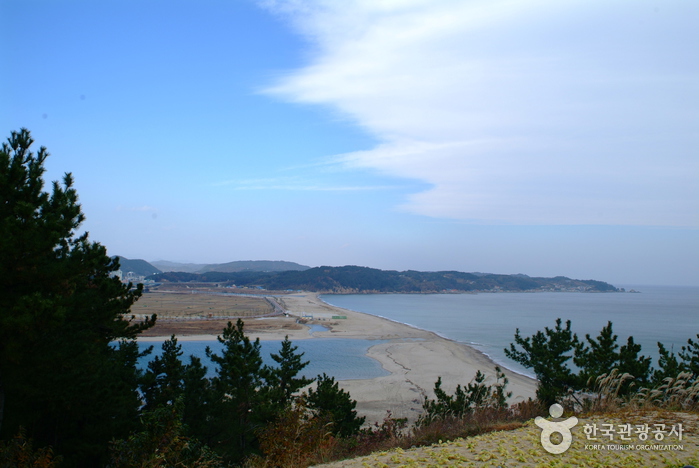
![Seongnyugul Cave [National Geopark] (성류굴 (경북 동해안 국가지질공원))](http://tong.visitkorea.or.kr/cms/resource/42/2613142_image2_1.jpg)
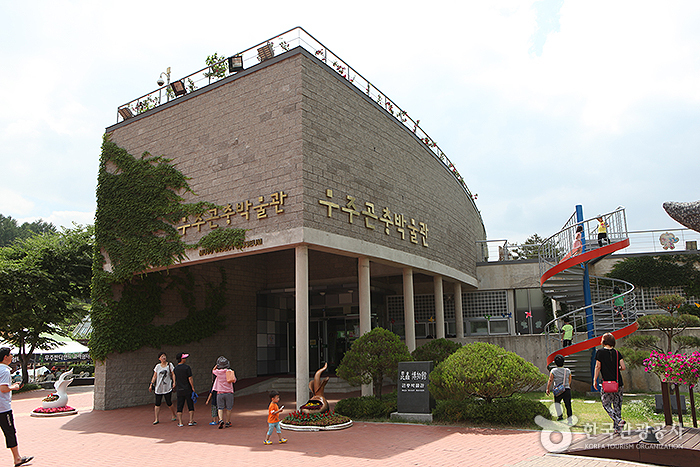
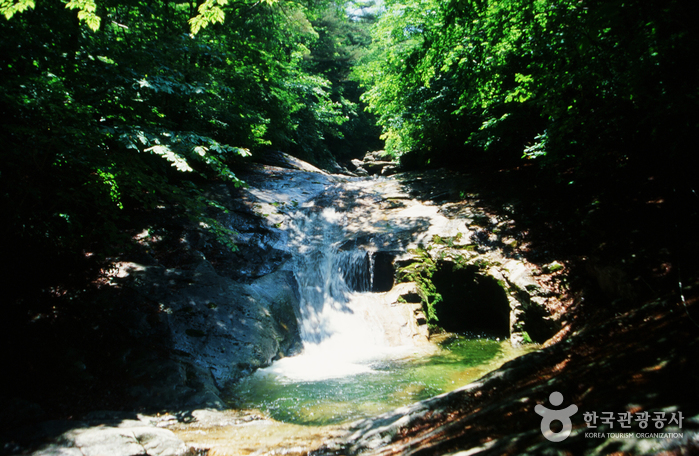
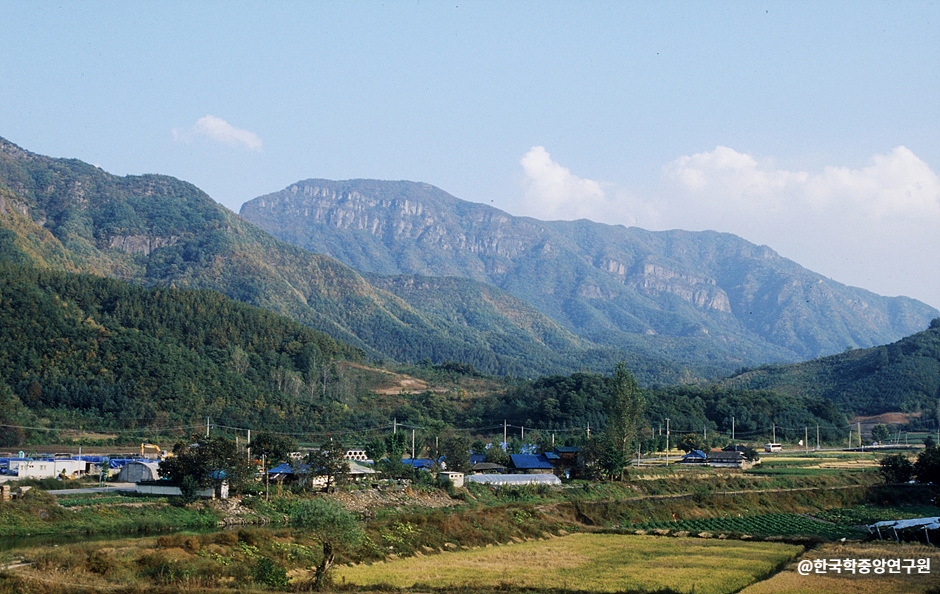
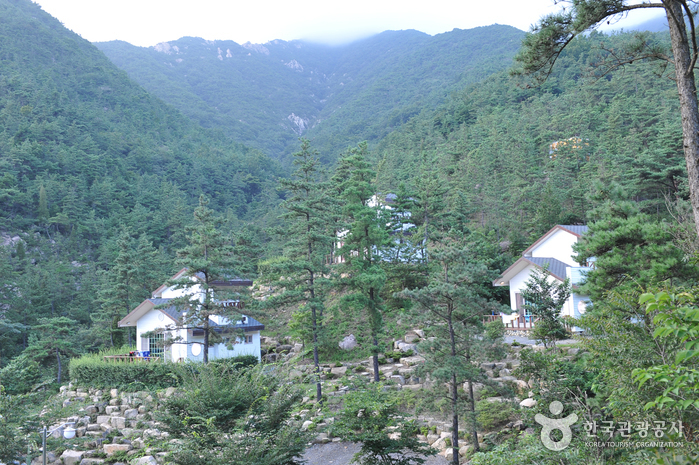
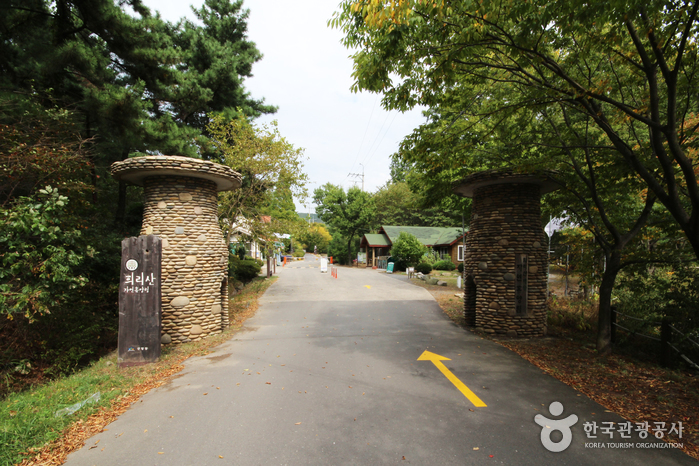
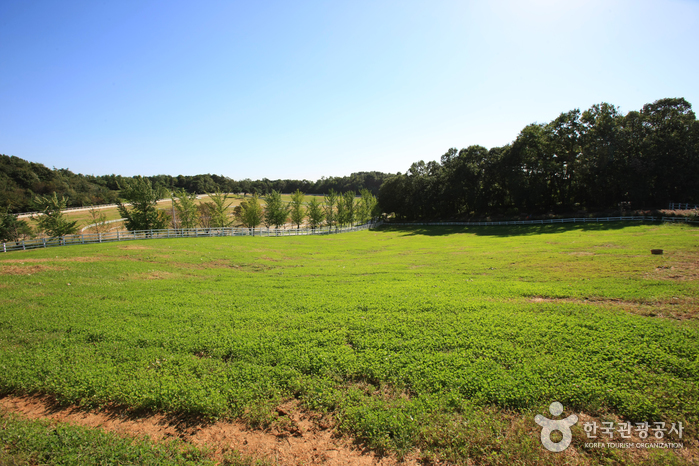

 English
English
 한국어
한국어 日本語
日本語 中文(简体)
中文(简体) Deutsch
Deutsch Français
Français Español
Español Русский
Русский